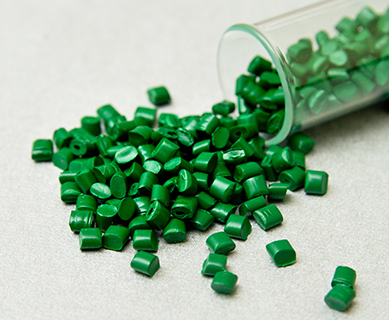What are the Application & Benefit of Green Pigments in Coating?
Pigment Green 7: A Brief Overview
Pigment Green 7 is one of the most widely used green pigments in the production of paint, plastics, food dyes, general industry, powder coatings, textile printing, Offset & lithographic ink, enamel, flexography ink, and waterborne coating. They come under the family name phthalocyanine dyes, a copper (II) complex with chlorinated phthalocyanine. The pigment’s color differs based on the amount of pigment added. If used in large amounts, it can appear almost bluish-green or greyish-green in color.
Many major production units use pigment green 7 as their main raw material source. With the advancement in science and equipment, green 7 has brought us new shades, tones, textures, and exploration, and it continues to do so in everyday life.
Most of the pigments are natural in their original form, but some are synthetic and that can often lead to uncertainty when differentiating between pigment and dye. Pigment Green 7 is one of the synthetic colorants. The pigment has widely been used in textiles, printing ink, plastics, paints, and coats. Pigment’s wide range of usage in almost every industry keeps it demanding.
There are broad advantages of green 7, which always makes them stay in demand. The green 7 available in the market are lightweight and can be carried easily. Even larger quantities of this pigment can be transported from place to place, resulting in a reduction in transportation costing. Since it acts as a catalyst, it fastens the manufacturing process. Also, green 7 is insoluble in water. Due to its water resistance property, it is widely used in several industries. Furthermore, this pigment is glowing and bright in physical appearance. Many manufacturing units tend to need their final products and goods to appear bright and have shine in them, and therefore, pigment green 7 allows you to add that shine and brighter look to any product.
Industrial Uses Of Pigment Green 7
There is a wide array of Pigment Green 7 for industrial uses. The pigment has customarily been used in textiles, coating, pigments for painting, automotive and transportation, plastics, building and construction, printing and packaging, and Decorative materials and finishes.
The stability of pigment green 7 makes it very beneficial in applications requiring its resistance under high intensity or other synthetically severe circumstances. Being transparent and insoluble, it has no propensity to emigrate in the material. Printing inks and packaging industry use it as a standard pigment.
Some basic properties of pigment green 7, such as high tinting strength, color, capacity to resist wetness, and smaller particle size, among other pigments, make it perform best in some industries like coating industries, ink industries, rubber, textile, dye, and even paint industries.
Introduction To Green Pigments For Coating
Appearance is the most important factor, and it is astonishing to know how the coating is necessary in the world. Coating an end product makes it look more eyes catching in the buyer's book of consideration. The coating also protects the materials from rusting, specifically metals increasing longevity.
Depending on their configuration, pigments for coating can be classified into three major groups:
- Waterborne: They comprise pigments that are dispersed in water.
- Solvent Borne: They comprise pigments that are dissolved in organic solvents.
- Solvent-Free: In a solvent-free configuration, the pigment does not comprise any solvents or water. They are dissolved directly in the adhesive.
Pigments For Coating Waterborne
The recognition of the end-use of the paint is essential, as resilience and reluctant chemical requirements. The highest price that can be authorized for improved performance depends on this insight.
For instance, an ordinary pigment would not be suitable and sufficient enough for automotive works, just as a high-graded pigment would be needless for use in gardening equipment.
The pigments for waterborne coating groups come under architectural coatings. Architectural coatings are the pigments used to overlay homes and buildings. Some coatings have specific uses, such as wall paints, roofs, or deck works.
Some essential features that all types of pigments for coating architectural coats must provide are as follows:
- It should ensure resistance to environmental circumstances.
- Should create desired colors to attain demanding pigments for coating properties.
- Should have a brilliant reluctance to crystallization.
- Should possess high tinting strength.
- It should have high-intensity heat resistance.
- It should be durable and easy to scatter.
Pigments For Coating Solvent-Borne
The pigments for coating solvent-borne groups come under automotive coatings. Most pigments for coating must be derived in a specific method to attain a certain look and feel. Even small factors, such as the particle size of the pigments for coating, also affect the way they interrelate with exposure to light. Larger the size of the particle, the more sparkle it provides. On the contrary, the smaller size of the particle gives a smoother glass-like look.
For instance, pigments for coating a car have several layers coated and use a specific method to apply them. These several different layers act as a shield on the car's surface to protect it from macro-environmental factors. Factors such as rain, dust, heat, cold, UV rays, and impurities.
To add different layers of pigments for coating an automobile or a vehicle, the pigment used to coat it should be ever-lasting and must not collapse over a certain period.
Pigments For Coating Solvent-Free
The Pigment Green 7 Manufacturer for coating solvent-free groups come under industrial coatings. It serves the purpose of giving color and opacity to the coat. Also, it isn't easy to categorize different industrial coatings since there can be different configurations depending on various factors, such as their structure, their place in the system, or how it hardens after application.
Depending on the pigment's configuration, industrial coatings are further classified into:
- Polyurethane coatings
- Epoxy coatings
- Acrylic coatings
- Metal coatings
- Zinc coatings




